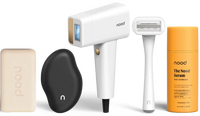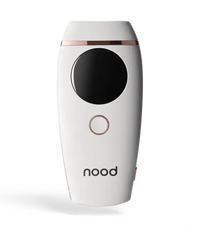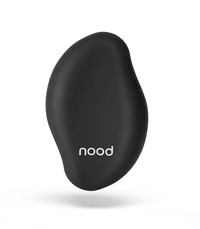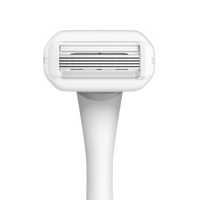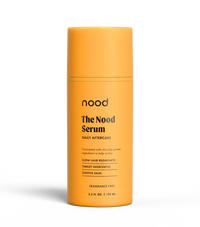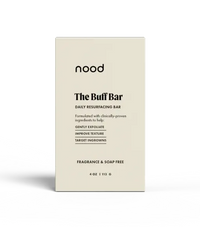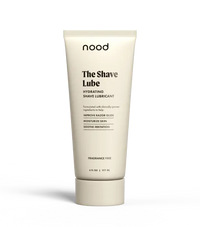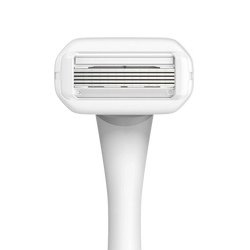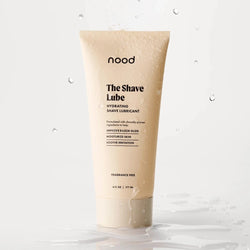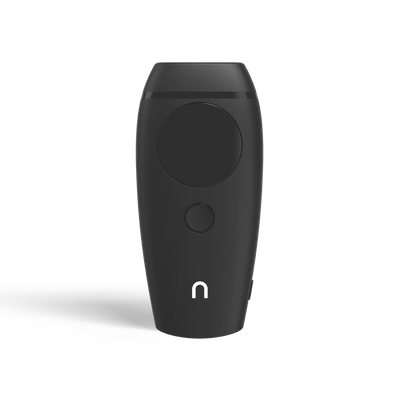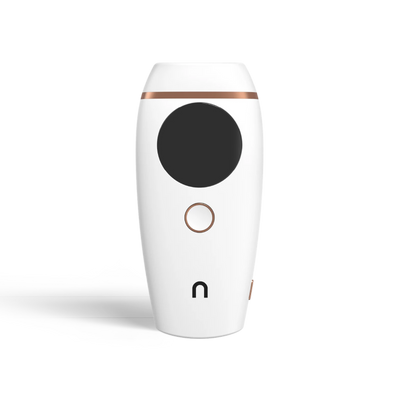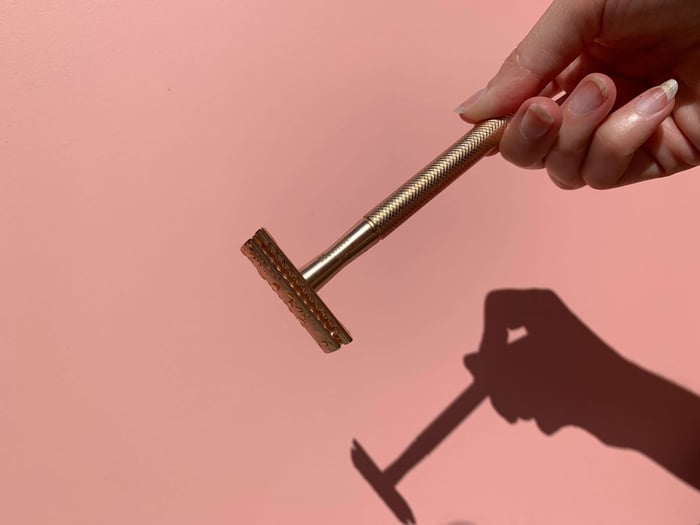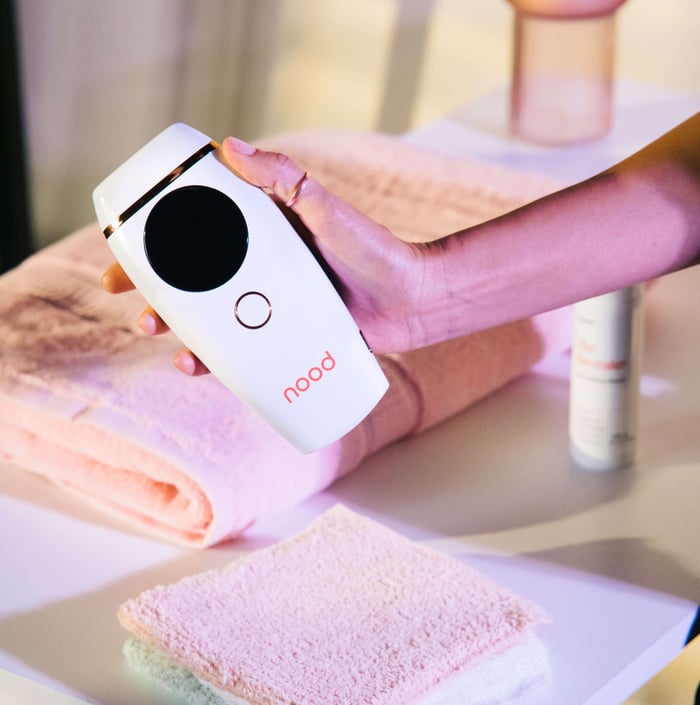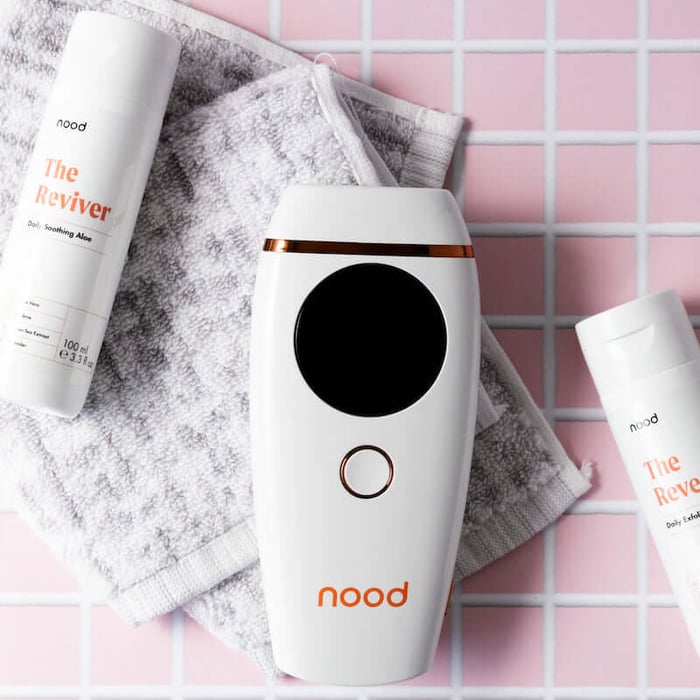
How many sessions of laser hair removal will you need?
We really hate answers that leave you with more questions, but when it comes to how many sessions of laser hair removal you’ll need, it really depends.
Laser hair removal generally takes 3, 6, or 12 sessions. The number of sessions you need depends on the body part you want to see hair-free, the type of hair you're working with, and even your hormones.
For most people, 4-6 initial treatment sessions with maintenance touch ups every few months after that is plenty to keep skin laser smooth.
We know, we know… it’s a lot! Even though you’re working toward permanent hair reduction here, you could spend a good chunk of time (and change) getting there.
The good news is, permanent hair removal at home is a thing. All of a sudden, it matters less that you don’t know exactly how many sessions you’ll need because you can do it in your jammies.
Let’s get into all of that, including why all that effort is still worth it to get rid of unwanted hair.
Table of Contents
The number of sessions depends on the body part.
Your hair growth cycle is also a factor.
What kind of results do you want?
You can achieve lasting results at home on your own schedule.
How laser hair removal works
Laser hair removal works by targeting the pigment or melanin of your hair follicles with heated light energy. The laser damages each hair follicle to the point that hair regrowth is permanently limited in that follicle. If a hair does grow back, it is typically much sparser.
IPL treatments (in most at-home laser hair removal devices) are similar, but use a broadband pulsed light instead of a single focused laser. They’re just as effective as in-salon laser hair removal sessions, and more budget-friendly once you buy the device.
The cost of in-salon laser hair removal varies too, by the way. You may spend around $100-$150 on every appointment you make to blast that bikini line into oblivion.
While we can’t promise that laser hair removal will be permanent for everyone, it does result in permanent hair removal for many and permanent hair reduction for those that do see hair regrowth. Many stay hair-free for years after their series of treatments.
It matters if you’re a good candidate, though.
Since lasers are pigment-seeking, they can pick up contrasts between your hair and skin color more effectively than with skin tones that closely match your body hair.
That’s why ideal candidates for laser hair removal have dark to light skin with darker hair. At-home IPL treatments and most in-salon treatments aren’t recommended for very dark skin types and red, blonde, or gray hair colors.
The number of sessions depends on the body part.
Some areas of the body respond to laser hair removal better than others. Your underarms and bikini area may need a few extra sessions to get silky smooth, but both of those body parts eventually respond well to the laser.
It turns out that lasers love coarse, dark hair… even if you don’t. 😉
Your legs or back may not need as many treatments. Hair tends to grow back slower in those areas, but that’s not true for everyone. You could be that special guy or gal with rapid regrowth where it’s not expected.
You’ll also need to sit under the laser for longer to account for the larger areas, but that shouldn’t come as a surprise. A small area like your chin should only take a few minutes per session, while both legs may take up to an hour.
Your hair growth cycle is also a factor.
Laser treatments can only zap hair follicles in an active growth cycle. Your body hair doesn’t make it easy on you here, either. Some of your follicles grow while others rest, and vice versa. They’re unpredictable that way.
Hair growth stages
Your body hair goes through 3 main phases: anagen (growth), catagen (transition), and telogen (resting). The new hair growth phase is what you want to target for optimal results with any laser technology.
After a laser hair removal treatment, expect some shedding. We’re not talking about dog-level shedding, but you will notice hairs falling away when the targeted follicles try to grow new hair. A gentle exfoliant is a good way to help that process along.
How hair growth affects your sessions
While up to about 90% of your hair follicles may be in a growth phase at any given moment, that’s still short of 100% of your unwanted hair. That’s why repeat laser hair removal sessions are important to get your treated areas hair-free. Each repeat treatment gets you closer to that goal.
Don’t forget about hormones!
Certain body parts just want to grow hair faster, thanks to our hormones. That includes facial hair and pubic hair in both men and women.
(Ladies who keep a razor in your glove box just in case you forgot to take care of that mini-mustache before a big date… We get it. Hormones kinda suck.)
Hormonal disorders can also make laser hair removal more challenging. Women with polycystic ovarian syndrome (PCOS) may suffer from either rapid hair growth or hair loss depending on the symptoms of their condition.
Hormonal changes like menopause or fluctuating testosterone levels can also result in thicker or faster-growing body hair. As if hot flashes weren’t enough!
But we don’t shy away from a challenge, even if it’s caused by hormonal hair growth. You’re still a good candidate for safe, effective at-home hair removal if you suffer from a condition like PCOS. You just may need to be a little more patient with yourself and your results.
What kind of results do you want?
Some of you want a treatment plan that results in permanent hair removal. You never want to see peach fuzz on that upper lip ever again. Maybe you want silky smooth legs without the fuss of the other hair removal methods out there.
Others just want hair reduction.
Laser hair removal is a good way to reduce the amount of hair in targeted treatment areas without the side effects of more painful methods like waxing or electrolysis. If that describes you, regular touch-ups may not even be necessary.
A session or two may make it easier for you to tame an unruly beard. A few treatments may be enough to get ingrown hairs under control. The horrors of ingrown hairs are a big reason people turn to laser treatments, by the way. Oof.
Just ensure you’re not plucking or tweezing in that downtime between sessions. IPL and laser hair treatments work best when you prep your skin by shaving or microblading. That way, the laser can target the follicle beneath your skin.
While you’re at it, avoid excessive sun exposure in the weeks leading up to your treatment. Wear a sun cream or sunscreen with an SPF of at least 30+ if you have to be in the sun. Skip the tanning beds, too. The treatment works best with lighter skin.
Bottom Line
How many sessions of laser hair removal you’ll need ranges from 3-12 sessions and depends on:
- the body part you target,
- where you are in your hair growth cycle, and
- your hormones.
At Nood, we recommend treatments with The Flasher 2.0 twice a week for 8 weeks, with touch ups every 3-6 months. You’ll know when it’s time for a session; just don’t use the handset more than twice a week.
Remember: You want to hit the hair follicles during the active growth cycle. Anything more than that and you may irritate your skin.
You can achieve lasting results at home on your own schedule.
At-home IPL treatments are an easy addition to your regular skincare routine. You’ll only need about 10-15 minutes if you’re targeting a small area, and you don’t need to schedule touch ups with anyone but yourself.
At Nood, you’re the boss. You choose when you’d like to have some me time to tackle unwanted hair safely and effectively. Start seeing results in as little as two weeks with The Flasher 2.0.
Still not convinced? We keep the receipts, sis. Browse our before and after photos for real results from real customers. If you’re not happy with your own experience, every device comes with a 90-day money-back guarantee… no questions asked.

